

| Cruise Region : USA / Canada / Mexico, Caribbean |
| Company : Oceania Cruises |
| Ship : Insignia |
| Journey Start : Wed 06 Aug 2025 |
| Journey End : Sat 13 Sep 2025 |
| Count Nights : 38 nights |
| Day | Date | Port | Arrival | Departure |
|---|---|---|---|---|
| 1 | 6.08 Wed | New York / USA | 07:00 | 18:00 |
| 2 | 7.08 Thu | Day at sea / Sea | ||
| 3 | 8.08 Fri | St. John's / Canada | 09:30 | 16:00 |
| 4 | 9.08 Sat | Halifax / Canada | 07:00 | 18:00 |
| 5 | 10.08 Sun | Sydney / Australia | 11:00 | 19:00 |
| 6 | 11.08 Mon | Saint Pierre and Miquelon / France | 09:00 | 19:00 |
| 7 | 12.08 Tue | St. John's / Canada | 08:00 | 16:00 |
| 8 | 13.08 Wed | Day at sea / Sea | ||
| 9 | 14.08 Thu | Day at sea / Sea | ||
| 10 | 15.08 Fri | Maniitsok / Greenland | 11:00 | 20:00 |
| 11 | 16.08 Sat | Nuuk / Greenland | 08:00 | 18:00 |
| 12 | 17.08 Sun | Paamiut / Greenland | 08:00 | 16:00 |
| 13 | 18.08 Mon | Day at sea / Sea | ||
| 14 | 19.08 Tue | Day at sea / Sea | ||
| 15 | 20.08 Wed | Isafjordur / Iceland | 10:00 | 19:00 |
| 16 | 21.08 Thu | Akureyri / Iceland | 09:00 | 17:00 |
| 17 | 22.08 Fri | Seydisfjordur / Iceland | 09:00 | 19:00 |
| 18 | 23.08 Sat | Day at sea / Sea | ||
| 19 | 24.08 Sun | Reykjavik / Iceland | 08:00 | |
| 20 | 25.08 Mon | Reykjavik / Iceland | 22:00 | |
| 21 | 26.08 Tue | Day at sea / Sea | ||
| 22 | 27.08 Wed | Djupivogur / Iceland | 07:00 | 18:00 |
| 23 | 28.08 Thu | Husavik / Iceland | 09:00 | 18:00 |
| 24 | 29.08 Fri | Isafjordur / Iceland | 07:00 | 18:00 |
| 25 | 30.08 Sat | Day at sea / Sea | ||
| 26 | 31.08 Sun | Day at sea / Sea | ||
| 27 | 1.09 Mon | Kakortok / Greenland | 07:00 | 16:00 |
| 28 | 2.09 Tue | Paamiut / Greenland | 07:00 | 18:00 |
| 29 | 3.09 Wed | Nuuk / Greenland | 07:00 | 16:00 |
| 30 | 4.09 Thu | Day at sea / Sea | ||
| 31 | 5.09 Fri | Day at sea / Sea | ||
| 32 | 6.09 Sat | Cork Hill | 06:00 | 14:00 |
| 33 | 7.09 Sun | Corner Brook / Canada | 08:00 | 16:00 |
| 34 | 8.09 Mon | Day at sea / Sea | ||
| 35 | 9.09 Tue | St. John's / Canada | 10:00 | 20:00 |
| 36 | 10.09 Wed | Bar Harbor / USA | 07:00 | 18:00 |
| 37 | 11.09 Thu | Boston / USA | 07:00 | 16:00 |
| 38 | 12.09 Fri | MARTHA'S VINEYARD | 07:00 | 17:00 |
| 39 | 13.09 Sat | New York / USA | 07:00 | 19:00 |
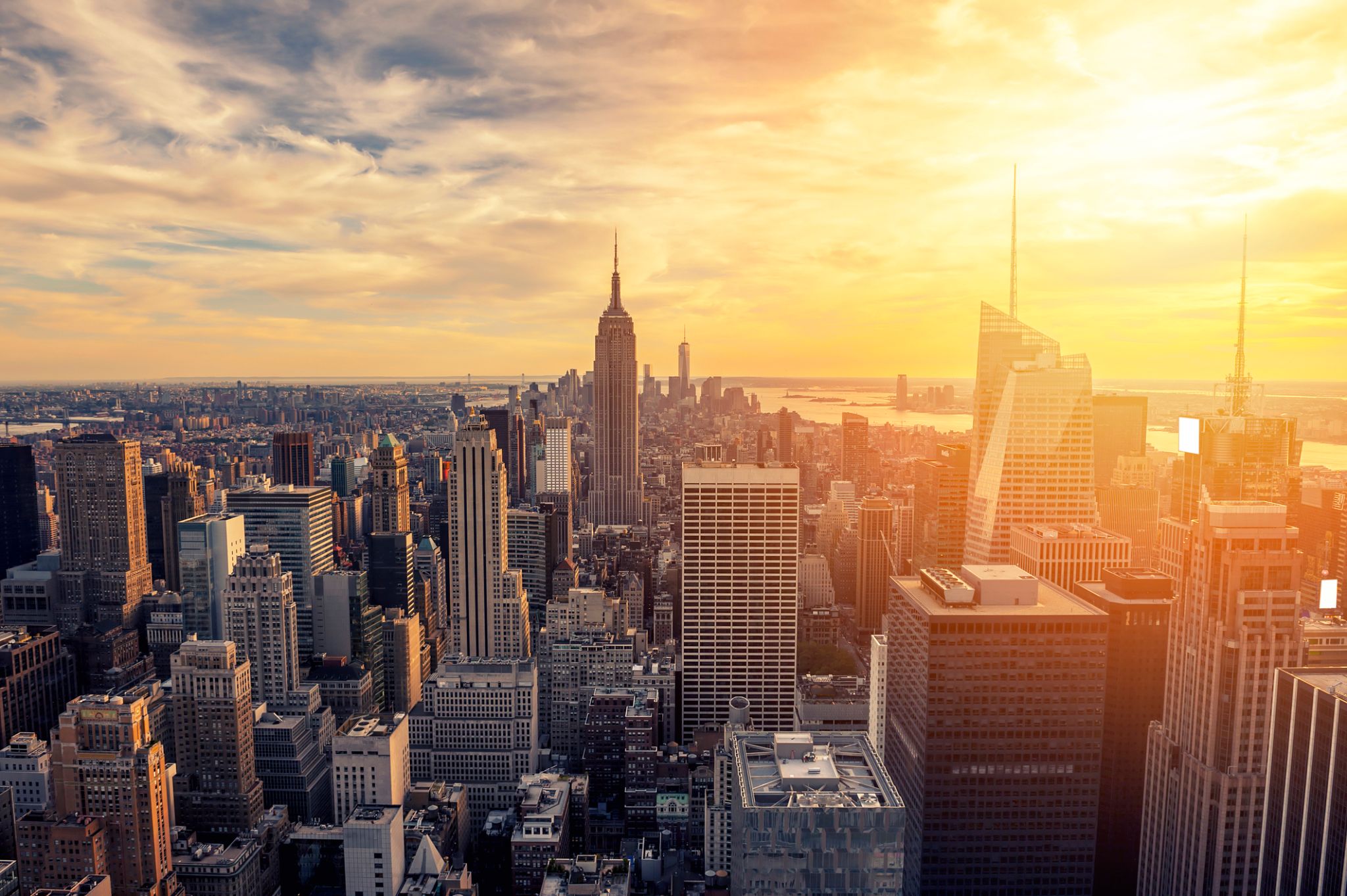
The world famous city of New York , the largest city in the United States, with a population of 8.5 million people, and with suburbs - 20.6 million. New York is the largest economic, political, scientific, and cultural center of the United States. It is rightly called the "Main Gate" in the United States, and the world's largest John F. Kennedy Airport is located here. One of the distinguishing features of the city is the variegated national composition of the population, also called the United States in Miniature.
New York gathered in itself the whole essence of this country: fashion, religion, goods, pace and rhythm of American life. The UN headquarters is located here. There are also many universities in New York, the Academy of Sciences, and many other scientific institutions. Like any other metropolis in the world, New York invites you to visit numerous museums in the city, theaters and concert halls, including the Metropolitan Opera and Carnegie Hall. A great place to relax in New York is Central Park, where you can feed hand-held squirrels, which, to everyone's surprise, are not afraid of people. You can also appreciate the beauty of the famous Empire State Building, with a height of 102 floors, it is an example of skyscrapers, although it was built in 1829-1831. "Must see" in New York, of course, the Statue of Liberty ("Lady Liberty"), located at the mouth of the Hudson River, on the small island of Liberty. And of course, don't forget to stroll along Broadway.

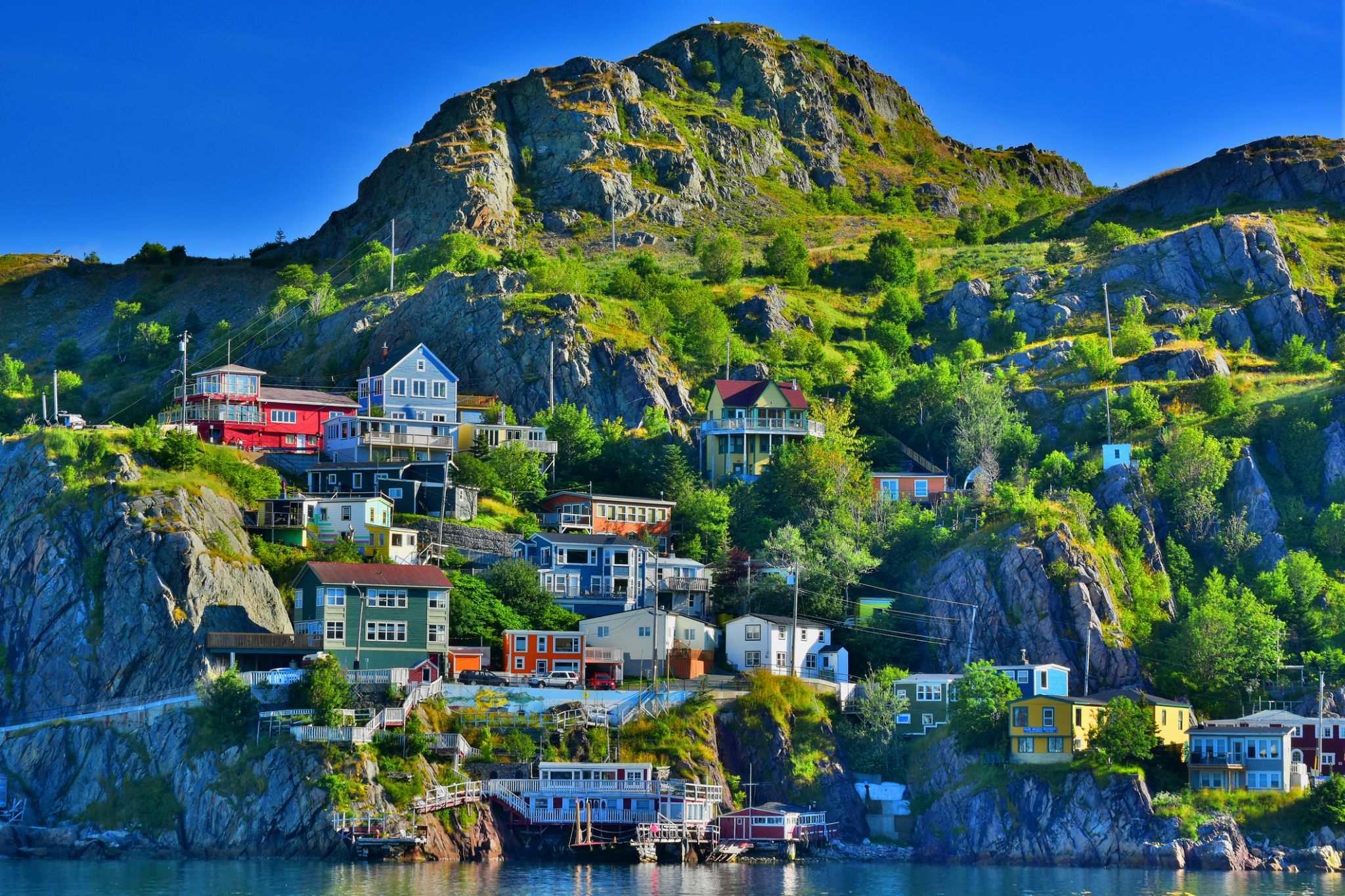
St. John's is the capital and largest city of the Canadian province of Newfoundland and Labrador. It is on the eastern tip of the Avalon Peninsula on the large Canadian island, Newfoundland. The city spans 446.04 square kilometres (172.22 sq mi) and is North America's easternmost city.
Its name has been attributed to the Nativity of John the Baptist, when John Cabot was believed to have sailed into the harbour in 1497 and to a Basque fishing town with the same name. Existing on maps as early as 1519, it is the oldest city in North America. It was officially incorporated as a city in 1888. With a metropolitan population of approximately 219,207 (as of July 1, 2017), the St. John's Metropolitan Area is Canada's 20th largest metropolitan area and the second largest Census Metropolitan Area (CMA) in Atlantic Canada, after Halifax.
The city has a rich history, having played a role in the French and Indian War, the American Revolutionary War, and the War of 1812. Italian inventor Guglielmo Marconi received the first transatlantic wireless signal in St. John's. Its history and culture have made it into an important tourist destination.
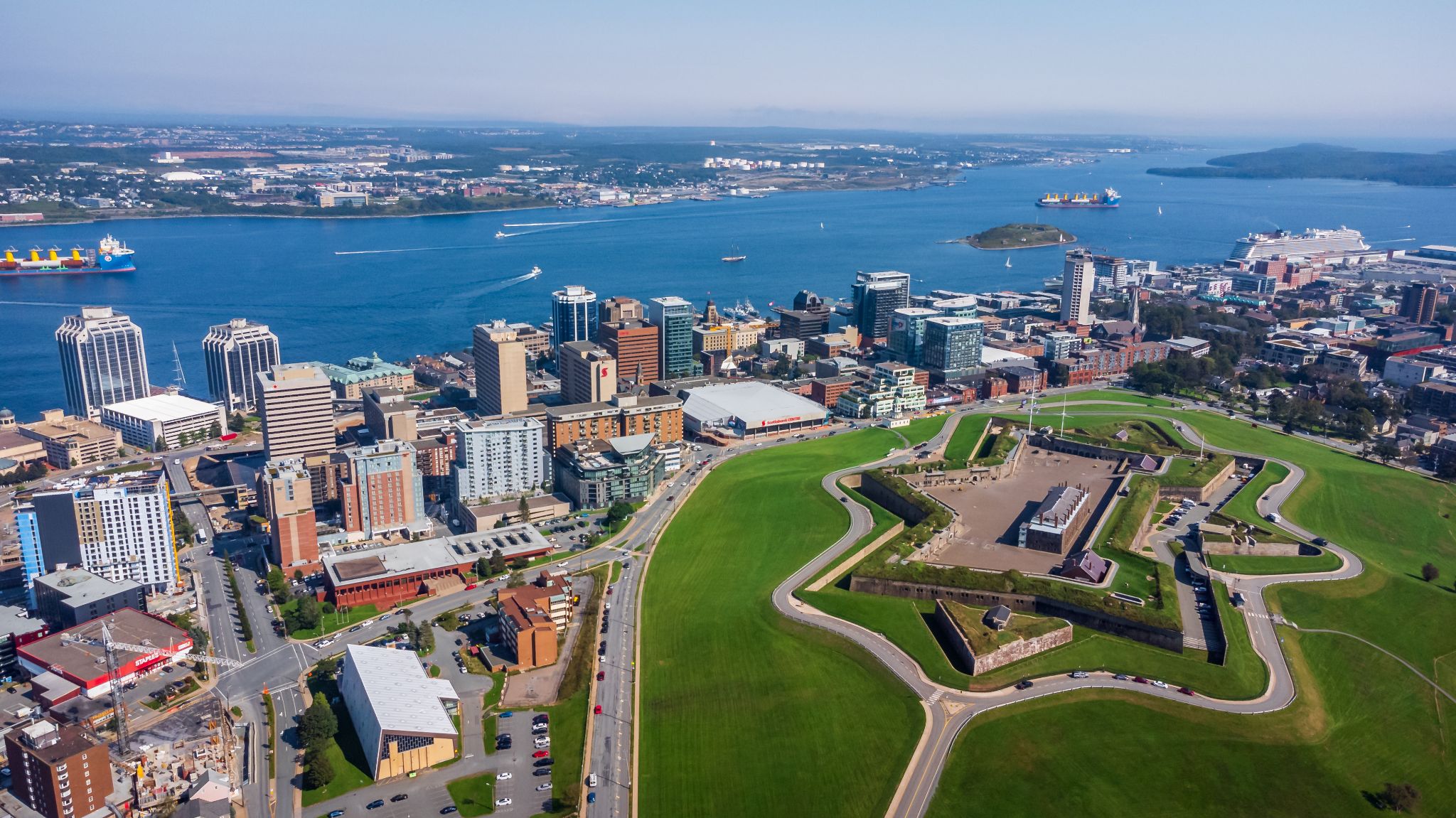
Halifax, also known as the Halifax Regional Municipality (HRM), is the capital of the Canadian province of Nova Scotia. The municipality had a population of 403,131 in 2016, with 316,701 in the urban area centred on Halifax Harbour. The regional municipality consists of four former municipalities that were amalgamated in 1996: Halifax, Dartmouth, Bedford, and Halifax County.
Halifax is a major economic centre in Atlantic Canada with a large concentration of government services and private sector companies. Major employers and economic generators include the Department of National Defence, Dalhousie University, Saint Mary's University, the Halifax Shipyard, various levels of government, and the Port of Halifax. Agriculture, fishing, mining, forestry and natural gas extraction are major resource industries found in the rural areas of the municipality.
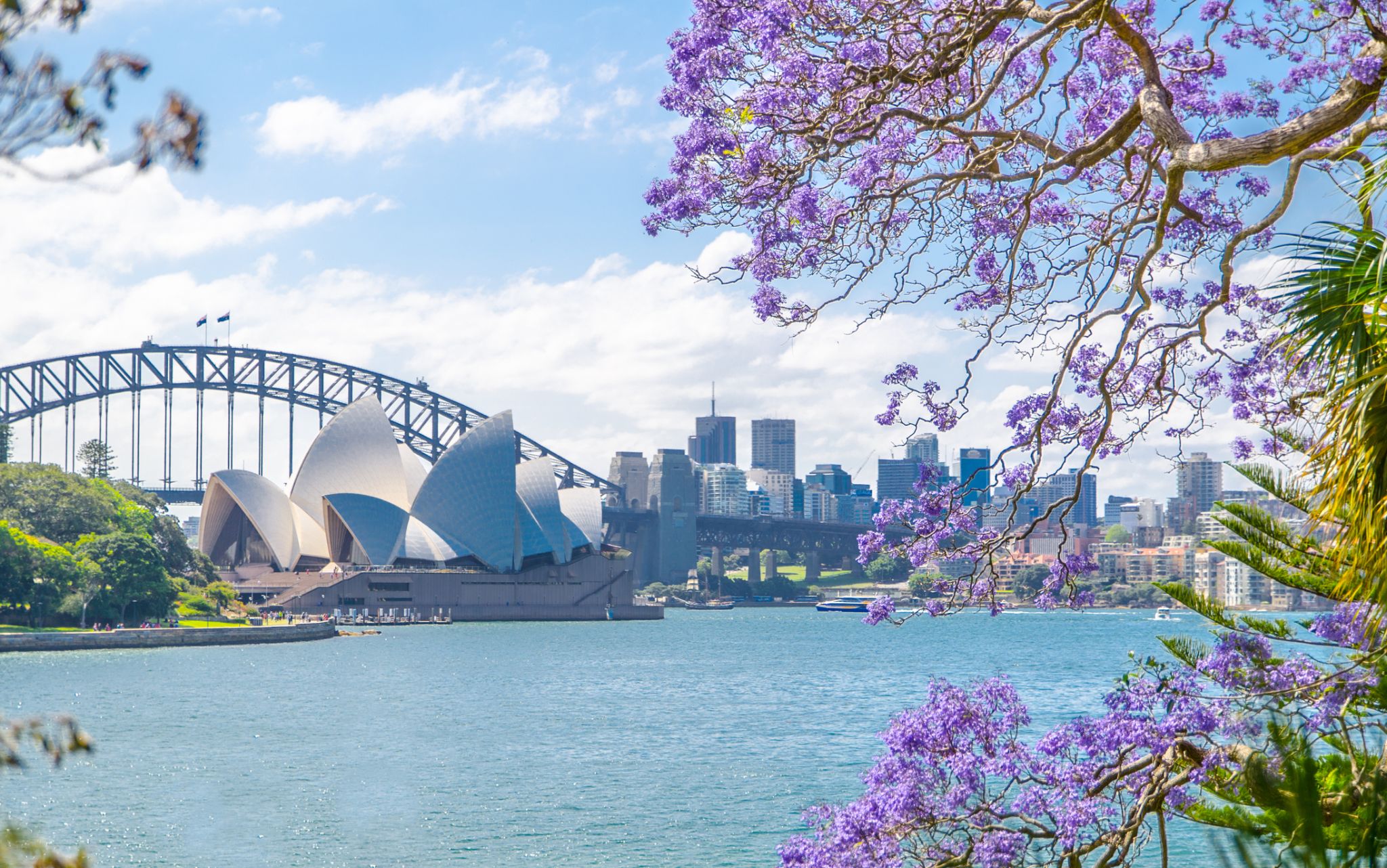
Sydney is the state capital of New South Wales and the most populous city in Australiaand Oceania. Located on Australia's east coast, the metropolis surrounds Port Jackson and extends about 70 km (43.5 mi) on its periphery towards the Blue Mountains to the west, Hawkesbury to the north, and Macarthur to the south. Sydney is made up of 658 suburbs, 40 local government areas and 15 contiguous regions. Residents of the city are known as "Sydneysiders". As of June 2017, Sydney's estimated metropolitan population was 5,131,326, and is home to approximately 65% of the state's population.

Saint Pierre and Miquelon is a tiny French archipelago located off the coast of Canada’s Newfoundland and Labrador province. It's the last remnant of French territory in North America, where the euro is used, French laws apply, and streets feel distinctly European—with bakeries, baguettes, and colorful houses set against the rugged North Atlantic backdrop.
The archipelago includes two main islands—lively Saint Pierre and the wilder, more spacious Miquelon. Visitors can witness whale migrations, hike scenic trails, or explore on bikes and snowshoes. A curious fact: during the U.S. Prohibition era, Saint Pierre served as a key hub for alcohol smuggling, a story still told in the local museum.

St. John's is the capital and largest city of the Canadian province of Newfoundland and Labrador. It is on the eastern tip of the Avalon Peninsula on the large Canadian island, Newfoundland. The city spans 446.04 square kilometres (172.22 sq mi) and is North America's easternmost city.
Its name has been attributed to the Nativity of John the Baptist, when John Cabot was believed to have sailed into the harbour in 1497 and to a Basque fishing town with the same name. Existing on maps as early as 1519, it is the oldest city in North America. It was officially incorporated as a city in 1888. With a metropolitan population of approximately 219,207 (as of July 1, 2017), the St. John's Metropolitan Area is Canada's 20th largest metropolitan area and the second largest Census Metropolitan Area (CMA) in Atlantic Canada, after Halifax.
The city has a rich history, having played a role in the French and Indian War, the American Revolutionary War, and the War of 1812. Italian inventor Guglielmo Marconi received the first transatlantic wireless signal in St. John's. Its history and culture have made it into an important tourist destination.



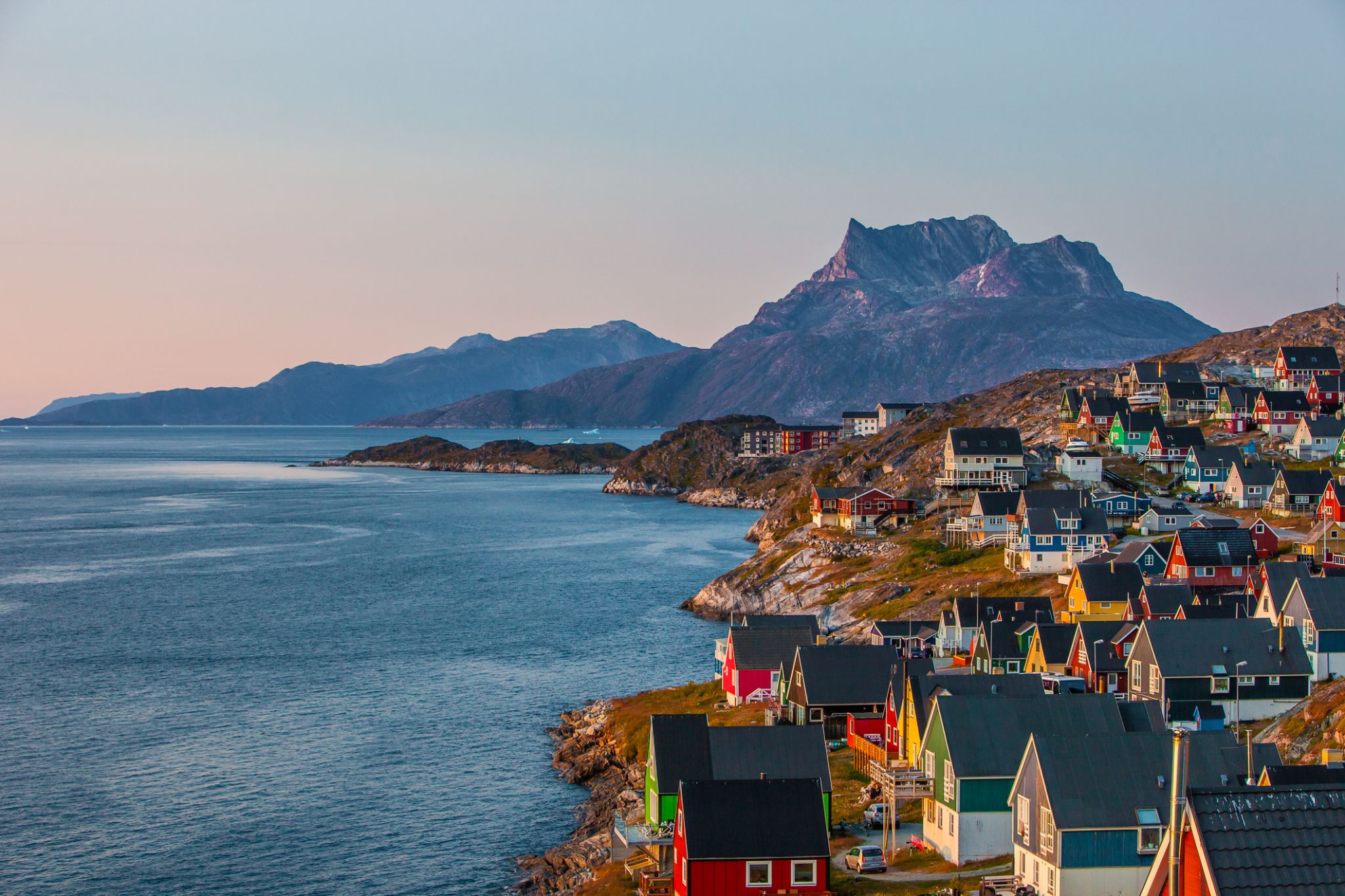

Immerse yourself in the atmosphere of northern nature, where icy waters and picturesque landscapes create a unique scene for every traveler. In this corner of Greenland, in the small town of Paamiut, bright traditions and friendly locals preserve the Inuit culture and a maritime heritage reflected in their fishing lifestyle.
Paamiut is the perfect place for those who want to experience Arctic silence and the grandeur of nature, as well as explore the unique flora and fauna of the region. Here, you can take coastal walks, watch whales and the northern lights, and enjoy fresh seafood prepared by locals with skill and care. This is a quiet and authentic spot offering a true northern adventure.



Isafjörður, meaning ice fjord or fjord of ice, ice in plural genitive) is a town in the northwest of Iceland.
The oldest part of Ísafjörður with the town centre is located on a spit of sand, or eyri, in Skutulsfjörður, a fjord which meets the waters of the larger fjord Ísafjarðardjúp. With a population of about 2,600, Ísafjörður is the largest settlement in the peninsula of Vestfirðir (Westfjords) and the administration centre of the Ísafjarðarbær municipality, which includes – besides Ísafjörður – the nearby villages of Hnífsdalur, Flateyri, Suðureyri, and Þingeyri.
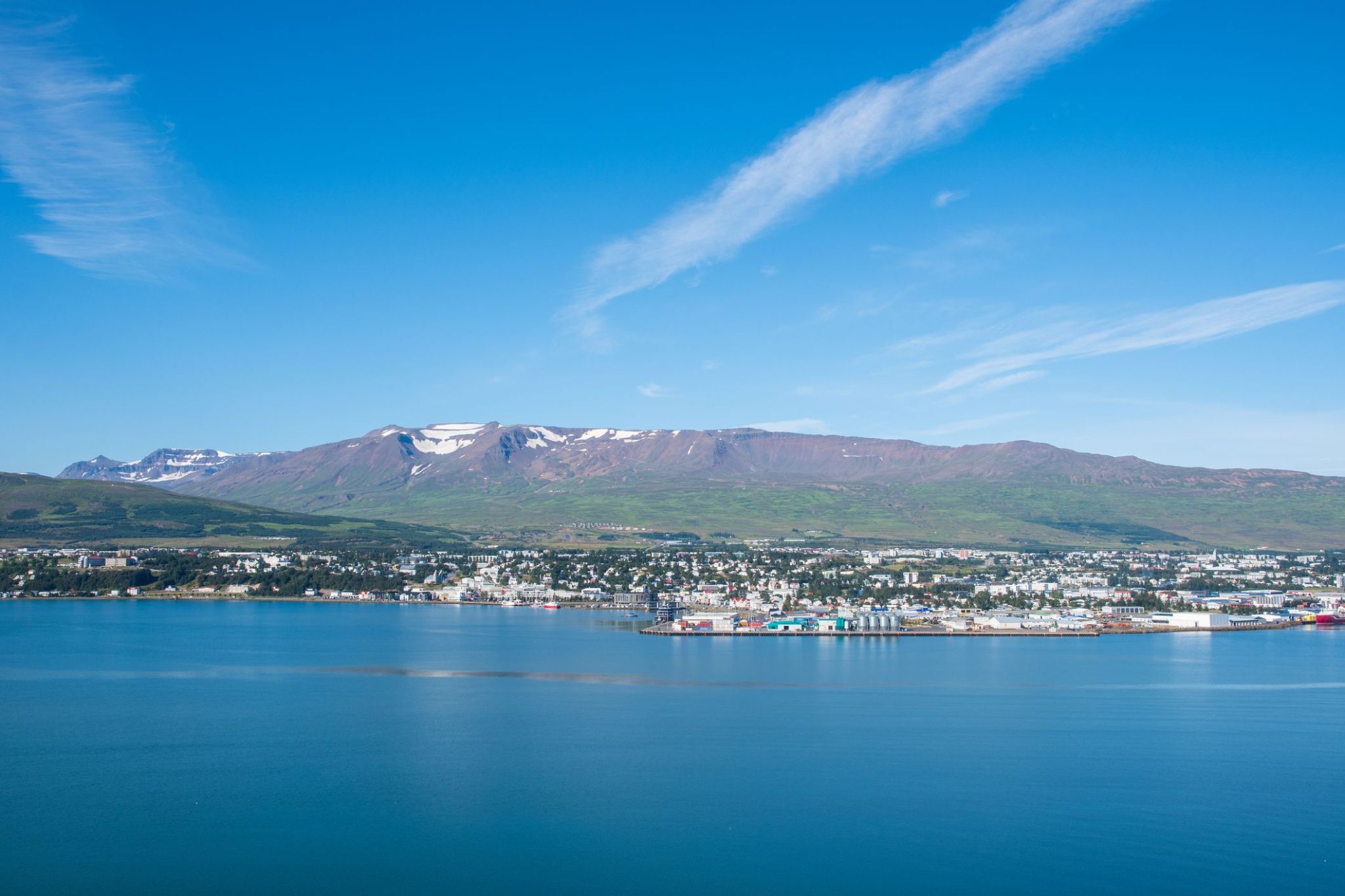
Akureyri is a town in northern Iceland. It is Iceland's Fifth largest municipality.
Nicknamed the Capital of North Iceland, Akureyri is an important port and fishing centre. The area where Akureyri is located was settled in the 9th century but did not receive a municipal charter until 1786. The town was the site of Alliedunits during World War II. Further growth occurred after the war as the Icelandic population increasingly moved to urban areas.
The area has a relatively mild climate because of geographical factors, and the town's ice-free harbour has played a significant role in its history.
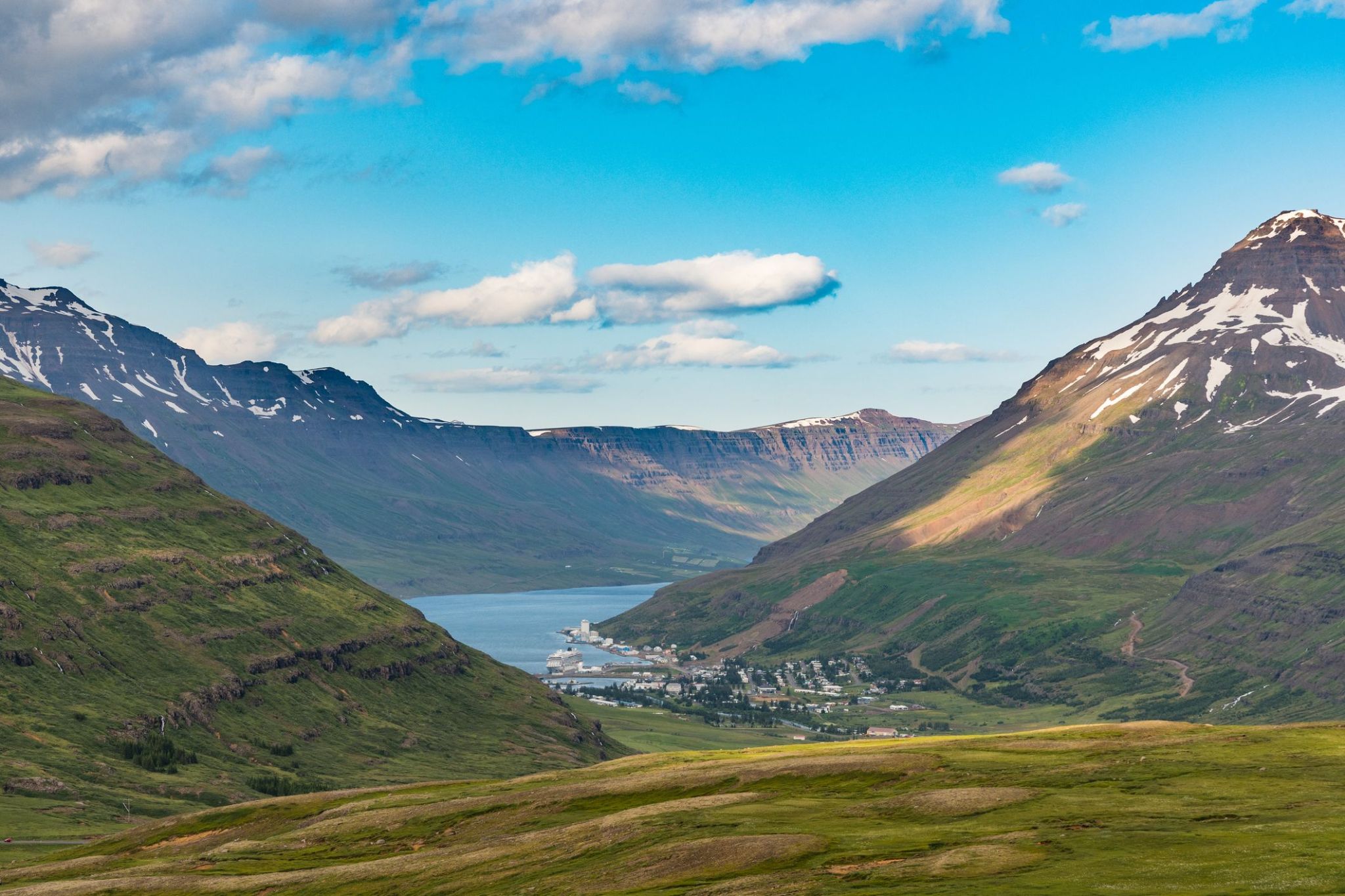
Cozy nestled among the fjords of Iceland, Seydisfjordur enchants travelers with its colorful houses and creative atmosphere. This small port town comes alive with the first rays of the northern sun: the air carries the scent of the sea, coffee from local cafés, and the fresh breeze rolling in from the Atlantic. Seydisfjordur is known for its art galleries and musical events, and in summer, it hosts the LungA Art Festival, attracting young artists and musicians from around the world.
A walk along the wooden piers by the bay allows you to feel the unhurried rhythm of Icelandic countryside life, with impressive waterfalls and mountain trails hidden nearby, leading to breathtaking views. Tourists can explore the old Norwegian church built in 1922, the famous blue church of Seydisfjordur, and then relax in local cafés while enjoying freshly baked goods and fish caught right off the fjord's shores. This corner of Iceland inspires those seeking solitude, silence, and the chance to witness the authentic life of the north.

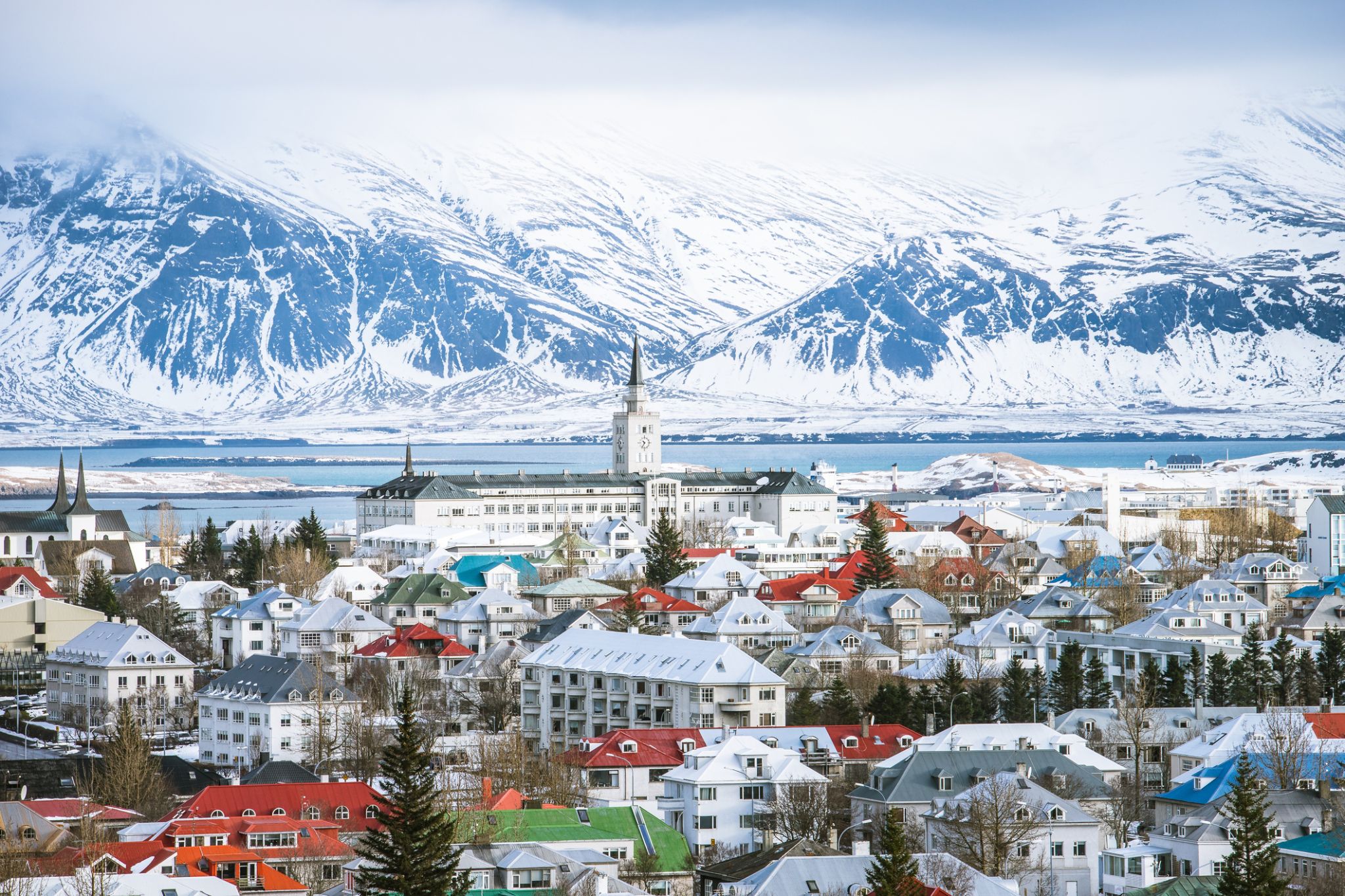
Reykjavík is the capital and largest city of Iceland. It is located in southwestern Iceland, on the southern shore of Faxa Bay. Its latitude is 64°08' N, making it the world's northernmost capital of a sovereign state. With a population of around 123,300 (and over 216,940 in the Capital Region), it is the heart of Iceland's cultural, economic and governmental activity, and is a popular tourist destination.
Reykjavík is believed to be the location of the first permanent settlement in Iceland, which, according to Ingólfr Arnarson, was established in AD 874. Until the 19th century, there was no urban development in the city location. The city was founded in 1786 as an official trading town and grew steadily over the following decades, as it transformed into a regional and later national centre of commerce, population, and governmental activities. It is among the cleanest, greenest, and safest cities in the world.

Reykjavík is the capital and largest city of Iceland. It is located in southwestern Iceland, on the southern shore of Faxa Bay. Its latitude is 64°08' N, making it the world's northernmost capital of a sovereign state. With a population of around 123,300 (and over 216,940 in the Capital Region), it is the heart of Iceland's cultural, economic and governmental activity, and is a popular tourist destination.
Reykjavík is believed to be the location of the first permanent settlement in Iceland, which, according to Ingólfr Arnarson, was established in AD 874. Until the 19th century, there was no urban development in the city location. The city was founded in 1786 as an official trading town and grew steadily over the following decades, as it transformed into a regional and later national centre of commerce, population, and governmental activities. It is among the cleanest, greenest, and safest cities in the world.

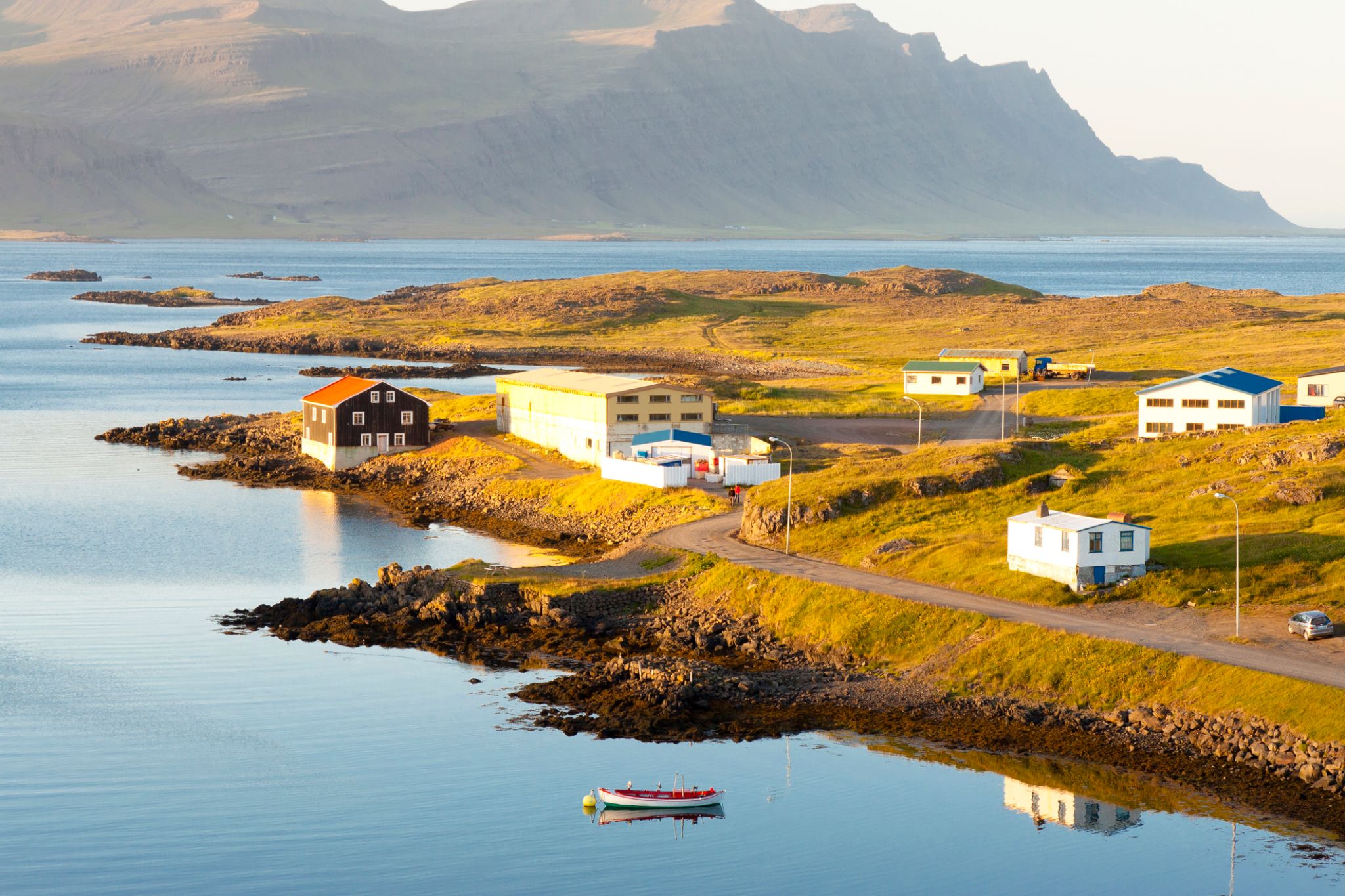
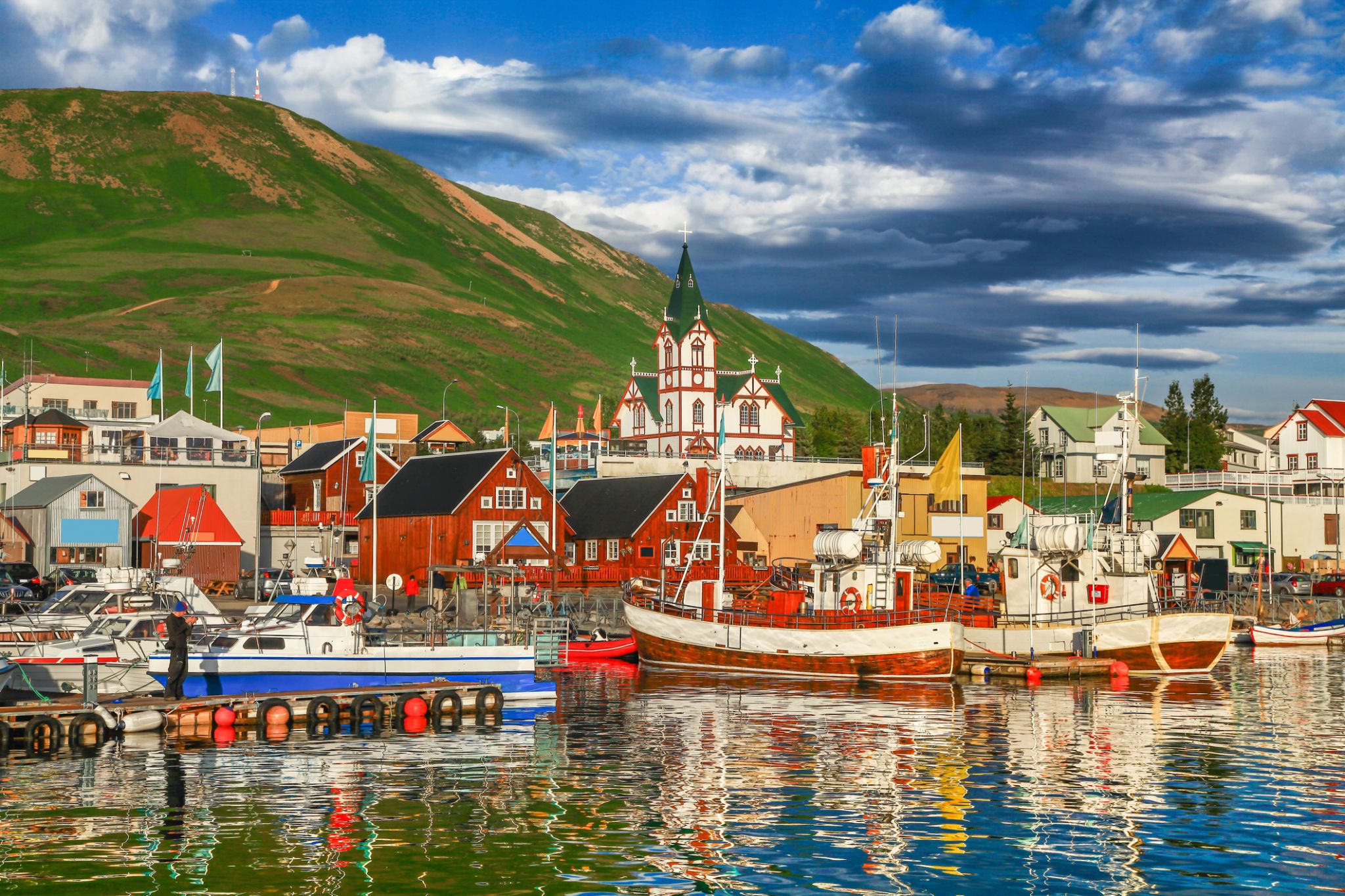

Isafjörður, meaning ice fjord or fjord of ice, ice in plural genitive) is a town in the northwest of Iceland.
The oldest part of Ísafjörður with the town centre is located on a spit of sand, or eyri, in Skutulsfjörður, a fjord which meets the waters of the larger fjord Ísafjarðardjúp. With a population of about 2,600, Ísafjörður is the largest settlement in the peninsula of Vestfirðir (Westfjords) and the administration centre of the Ísafjarðarbær municipality, which includes – besides Ísafjörður – the nearby villages of Hnífsdalur, Flateyri, Suðureyri, and Þingeyri.


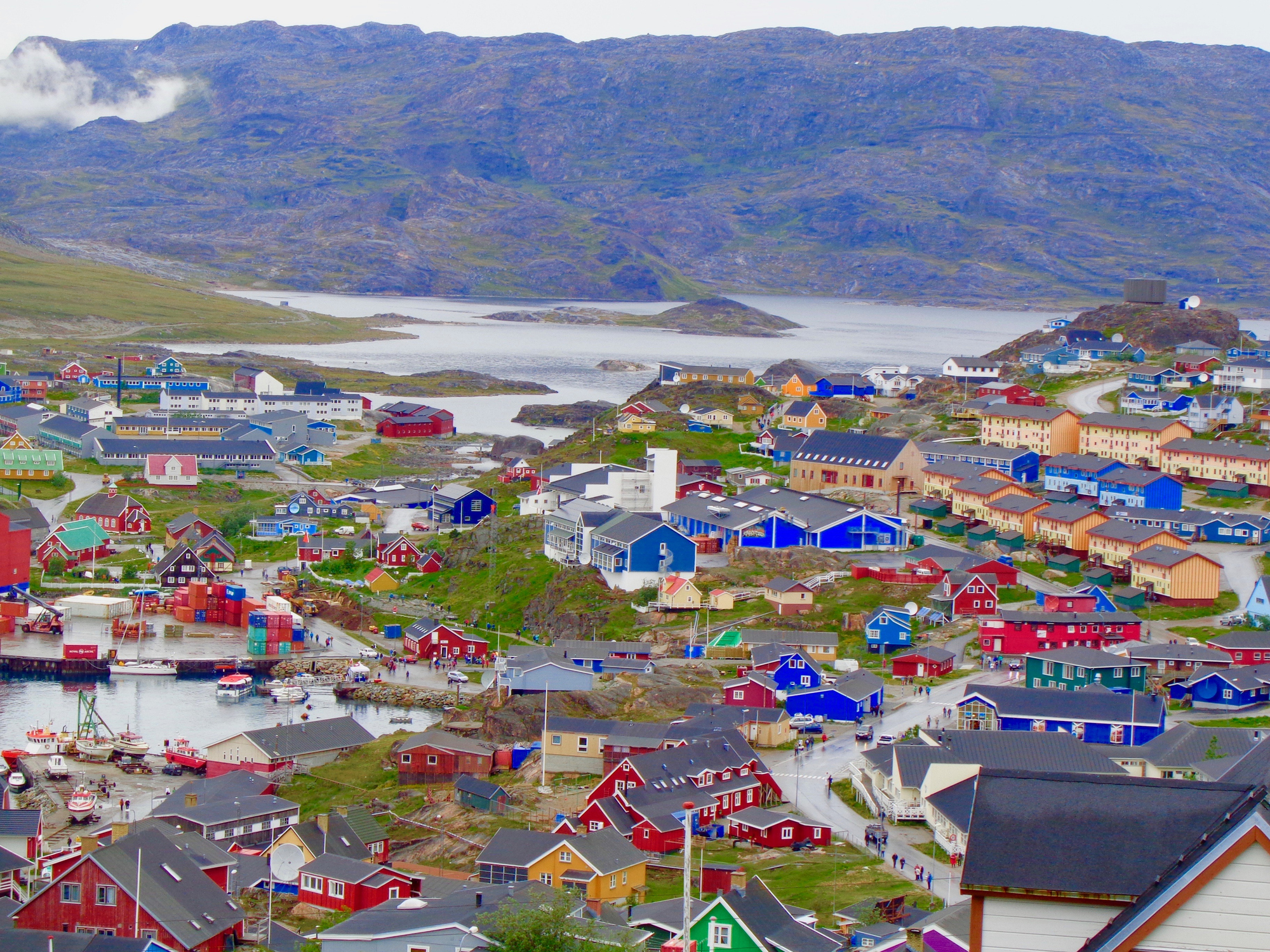
Qaqortoq, formerly Julianehåb, is a town in the Kujalleq municipality in southern Greenland, located near Cape Thorvaldsen. With a population of 3,089 in 2016, it is the most populous town in southern Greenland and the fourth-largest town on the island.

Immerse yourself in the atmosphere of northern nature, where icy waters and picturesque landscapes create a unique scene for every traveler. In this corner of Greenland, in the small town of Paamiut, bright traditions and friendly locals preserve the Inuit culture and a maritime heritage reflected in their fishing lifestyle.
Paamiut is the perfect place for those who want to experience Arctic silence and the grandeur of nature, as well as explore the unique flora and fauna of the region. Here, you can take coastal walks, watch whales and the northern lights, and enjoy fresh seafood prepared by locals with skill and care. This is a quiet and authentic spot offering a true northern adventure.







St. John's is the capital and largest city of the Canadian province of Newfoundland and Labrador. It is on the eastern tip of the Avalon Peninsula on the large Canadian island, Newfoundland. The city spans 446.04 square kilometres (172.22 sq mi) and is North America's easternmost city.
Its name has been attributed to the Nativity of John the Baptist, when John Cabot was believed to have sailed into the harbour in 1497 and to a Basque fishing town with the same name. Existing on maps as early as 1519, it is the oldest city in North America. It was officially incorporated as a city in 1888. With a metropolitan population of approximately 219,207 (as of July 1, 2017), the St. John's Metropolitan Area is Canada's 20th largest metropolitan area and the second largest Census Metropolitan Area (CMA) in Atlantic Canada, after Halifax.
The city has a rich history, having played a role in the French and Indian War, the American Revolutionary War, and the War of 1812. Italian inventor Guglielmo Marconi received the first transatlantic wireless signal in St. John's. Its history and culture have made it into an important tourist destination.
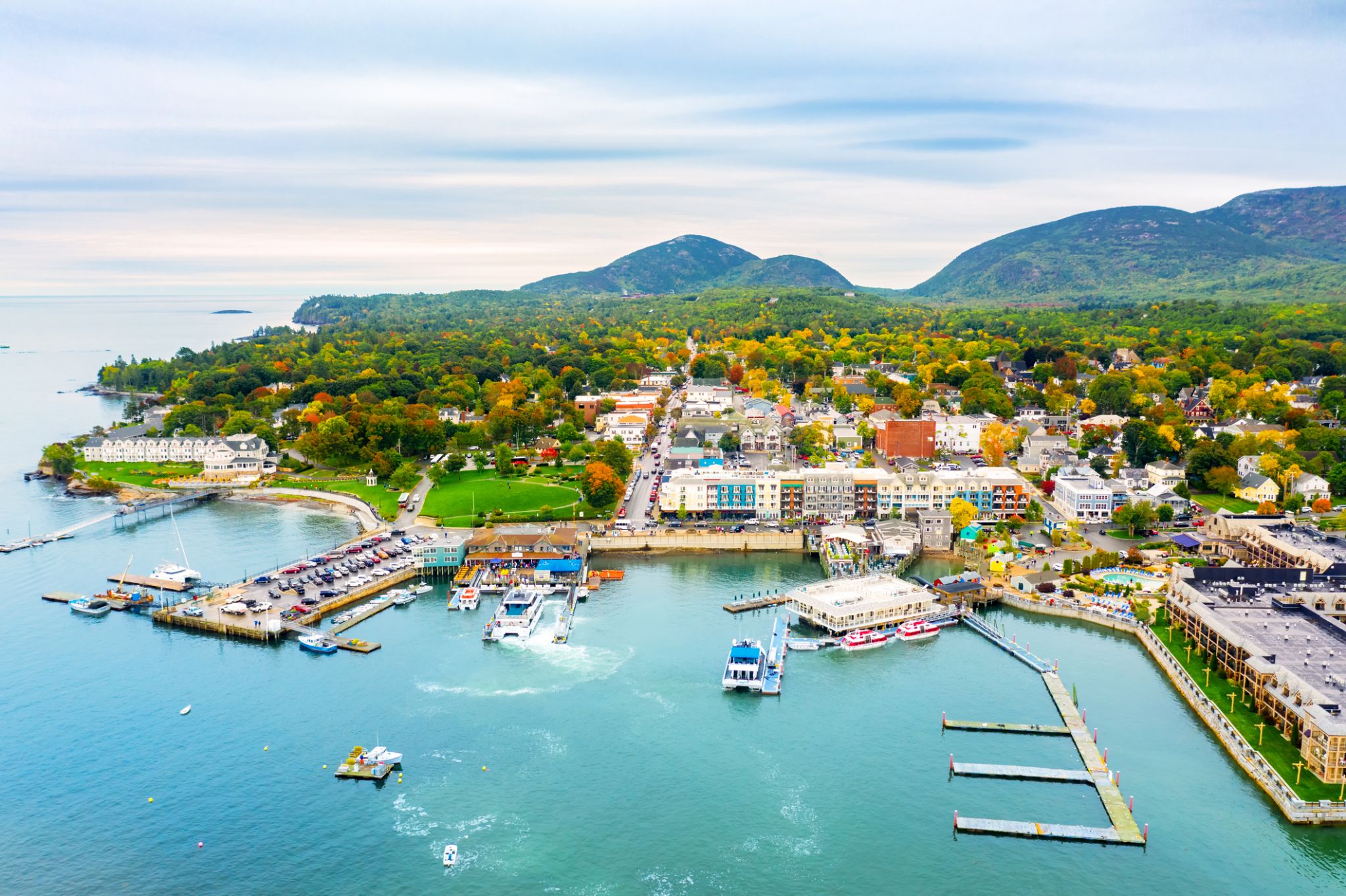
Bar Harbor is a town on Mount Desert Island in Hancock County, Maine, United States. As of the 2010 census, its population is 5,235. Bar Harbor is a popular tourist destination in the Down East region of Maine and home to the College of the Atlantic, Jackson Laboratory, and MDI Biological Laboratory (Salisbury Cove village). Prior to a catastrophic 1947 fire, the town was a noted summer colony for the wealthy. Bar Harbor is home to the largest parts of Acadia National Park, including Cadillac Mountain, the highest point within twenty-five miles (40 km) of the coastline of the Eastern United States. The town is served by the Hancock County-Bar Harbor Airport, which has flights to Boston, Massachusetts, as well as seasonal flights to Newark, New Jersey, and Portland, Maine.

Boston is the capital and most populous municipality of the Commonwealth of Massachusetts in the United States. The city proper covers 48 square miles (124 km2) with an estimated population of 685,094 in 2017, making it also the most populous city in New England. Boston is the seat of Suffolk County as well, although the county government was disbanded on July 1, 1999. The city is the economic and cultural anchor of a substantially larger metropolitan area known as Greater Boston, a metropolitan statistical area (MSA) home to a census-estimated 4.8 million people in 2016 and ranking as the tenth-largest such area in the country. As a combined statistical area (CSA), this wider commuting region is home to some 8.2 million people, making it the sixth-largest in the United States.
Boston is one of the oldest cities in the United States, founded on the Shawmut Peninsula in 1630 by Puritansettlers from England. It was the scene of several key events of the American Revolution, such as the Boston Massacre, the Boston Tea Party, the Battle of Bunker Hill, and the Siege of Boston. Upon gaining U.S. independence from Great Britain, it continued to be an important port and manufacturing hub as well as a center for education and culture. The city has expanded beyond the original peninsula through land reclamation and municipal annexation. Its rich history attracts many tourists, with Faneuil Hall alone drawing more than 20 million visitors per year. Boston's many firsts include the United States' first public park (Boston Common, 1634), first public or state school (Boston Latin School, 1635) and first subway system (Tremont Street Subway, 1897).
The Boston area's many colleges and universities make it an international center of higher education, including law, medicine, engineering, and business, and the city is considered to be a world leader in innovationand entrepreneurship, with nearly 2,000 startups. Boston's economic base also includes finance, professional and business services, biotechnology, information technology, and government activities. Households in the city claim the highest average rate of philanthropy in the United States; businesses and institutions rank among the top in the country for environmental sustainability and investment. The city has one of the highest costs of living in the United States as it has undergone gentrification, though it remains high on world livability rankings.


The world famous city of New York , the largest city in the United States, with a population of 8.5 million people, and with suburbs - 20.6 million. New York is the largest economic, political, scientific, and cultural center of the United States. It is rightly called the "Main Gate" in the United States, and the world's largest John F. Kennedy Airport is located here. One of the distinguishing features of the city is the variegated national composition of the population, also called the United States in Miniature.
New York gathered in itself the whole essence of this country: fashion, religion, goods, pace and rhythm of American life. The UN headquarters is located here. There are also many universities in New York, the Academy of Sciences, and many other scientific institutions. Like any other metropolis in the world, New York invites you to visit numerous museums in the city, theaters and concert halls, including the Metropolitan Opera and Carnegie Hall. A great place to relax in New York is Central Park, where you can feed hand-held squirrels, which, to everyone's surprise, are not afraid of people. You can also appreciate the beauty of the famous Empire State Building, with a height of 102 floors, it is an example of skyscrapers, although it was built in 1829-1831. "Must see" in New York, of course, the Statue of Liberty ("Lady Liberty"), located at the mouth of the Hudson River, on the small island of Liberty. And of course, don't forget to stroll along Broadway.